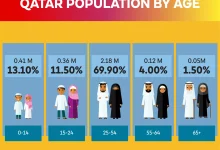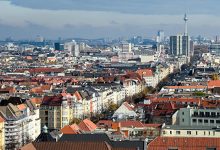Population Dynamics in Algeria: An In-depth Analysis of Growth, Demographics, and Future Trends
Algeria, the largest country in Africa and the 10th largest in the world, is a nation rich in history, culture, and natural resources. Located in North Africa, it has long been a crossroad for different civilizations, which has shaped its society and population dynamics over the centuries. The population of Algeria is a subject of great interest to demographers, policymakers, and economists, as it provides insights into the country’s social and economic future. This article will provide a comprehensive analysis of the current population of Algeria, its growth patterns, demographic structure, and the implications of these trends for the country’s future development.
1. Current Population Statistics
As of the most recent estimates in 2023, Algeria’s population stands at approximately 45 million people. The country has experienced significant population growth since its independence in 1962, when its population was estimated to be around 11 million. This growth is attributed to both high birth rates and improvements in healthcare, which have contributed to longer life expectancies and a reduction in mortality rates.
The population is highly concentrated in the coastal regions, which offer a more moderate climate and better economic opportunities, while vast areas of the Saharan interior remain sparsely populated. The majority of Algeria’s population resides in urban areas, particularly in the capital, Algiers, and other major cities like Oran and Constantine.
2. Population Growth Rate
Algeria’s population growth rate has slowed down in recent years, reflecting a global trend of decreasing fertility rates. The current annual growth rate is estimated at around 1.5%. This is lower than the peak rates observed in the 1970s and 1980s, when the country saw annual growth rates exceeding 3%. The decline in growth rate is partly due to increasing urbanization, higher education levels, and changes in societal attitudes towards family size.
The fertility rate in Algeria has fallen significantly over the past few decades. In the early 1960s, women in Algeria had, on average, more than six children. Today, that figure has dropped to around 3.3 children per woman, which is still above the replacement level of 2.1 children per woman but shows a clear trend toward smaller families.
3. Demographic Structure
The demographic structure of Algeria is youthful, with a significant proportion of the population being under the age of 30. The median age in Algeria is around 30 years, which is relatively young compared to many European or North American countries. This youthful population is an asset in terms of labor force potential but also presents challenges in terms of employment, education, and healthcare.
-
Youth Population: Around 30% of Algeria’s population is under the age of 15. This youth bulge creates both opportunities and challenges. On one hand, it offers the potential for a demographic dividend, where a larger working-age population supports the economy. On the other hand, it places immense pressure on the education system and the job market, which struggles to absorb the increasing number of graduates each year.
-
Working-Age Population: The working-age population (ages 15-64) represents the majority of the population, accounting for approximately 60% of the total. This demographic is the backbone of the country’s labor force, but youth unemployment remains a significant issue, especially for those with higher education qualifications.
-
Aging Population: While Algeria’s population is still relatively young, the percentage of elderly individuals (aged 65 and above) is slowly increasing. As life expectancy rises, the proportion of elderly people will likely continue to grow, placing additional strain on the country’s social services, healthcare system, and pension programs in the coming decades.
4. Urbanization and Migration Patterns
Algeria has undergone rapid urbanization since its independence, with the majority of the population now living in urban areas. The urbanization rate is estimated to be around 75%, a sharp increase from previous decades when most people lived in rural areas. This shift is driven by the search for better economic opportunities, access to education, and improved healthcare facilities.
The capital city of Algiers, with a population of over 3 million people, is the largest urban center in the country and serves as the political, economic, and cultural hub of Algeria. Other major cities, such as Oran, Constantine, and Annaba, also contribute significantly to the urban landscape.
In addition to internal migration from rural areas to urban centers, Algeria also experiences significant international migration. The country has been a destination for migrants from sub-Saharan Africa, seeking better economic opportunities. However, Algeria is also a transit country for migrants attempting to reach Europe, particularly via the Mediterranean Sea. This has created challenges related to border control, human rights, and the integration of migrant populations.
5. Economic Implications of Population Trends
The demographic trends in Algeria have direct implications for the country’s economic development. A young and growing population presents opportunities for economic expansion, particularly if the country can harness the potential of its labor force. However, this growth also poses significant challenges.
-
Youth Unemployment: One of the most pressing issues facing Algeria is the high rate of youth unemployment. Despite improvements in education, the job market has not kept pace with the growing number of young people entering the workforce. This has led to widespread dissatisfaction among the youth, contributing to social unrest and political instability in recent years. The government has implemented various programs aimed at creating jobs, particularly in the private sector, but the challenge remains significant.
-
Pressure on Social Services: The growing population also places increasing demands on social services, including healthcare, education, and housing. The government has made efforts to expand infrastructure and public services, but the rapid pace of urbanization and population growth makes it difficult to keep up with demand. In particular, access to quality healthcare remains an issue in rural areas, where medical facilities are often underdeveloped.
-
Pension and Social Security Systems: As the population ages, there will be greater pressure on the country’s pension and social security systems. Algeria’s pension system is currently under strain, as fewer workers contribute to the system while the number of retirees increases. This will require substantial reforms to ensure that these programs remain sustainable in the future.
6. Future Population Projections
Looking ahead, Algeria’s population is expected to continue growing, although at a slower rate than in previous decades. The United Nations estimates that the population will reach around 50 million by 2030 and 60 million by 2050. This growth will be accompanied by demographic shifts, including an aging population and continued urbanization.
The government has recognized the importance of managing population growth and its implications for sustainable development. In recent years, there have been efforts to diversify the economy away from oil and gas, encourage entrepreneurship, and invest in renewable energy. These initiatives are designed not only to create jobs but also to prepare the country for the challenges posed by a growing and evolving population.
7. Conclusion
The population of Algeria is experiencing significant changes, shaped by a combination of high birth rates, declining mortality rates, and rapid urbanization. The country’s youthful population presents both opportunities and challenges. While the demographic structure offers the potential for economic growth, it also requires strategic planning to address issues such as youth unemployment, pressure on social services, and the implications of an aging population.
In the coming decades, Algeria will need to invest in human capital, infrastructure, and sustainable economic development to ensure that its growing population can be supported and its potential fully realized. The government’s ability to adapt to these demographic changes will be crucial in determining the country’s future trajectory in terms of social stability, economic prosperity, and overall well-being for its citizens.
By addressing these demographic trends, Algeria can position itself to face the challenges of the future and unlock the full potential of its people.





